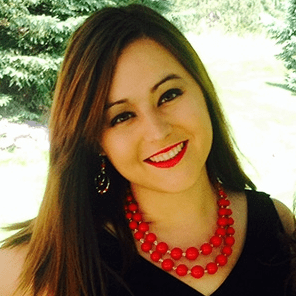By Rachel Asproth, Arise
 Rachel Asproth is the editor of Arise at CBE International. She’s a published author, social advocate, wannabe theologian, and aspiring reconciler. Rachel has a BA in reconciliation and literature from Bethel University. She lives in Saint Paul, MN, and spends her free time scamming her way into theology conferences and buying far too many books.
Rachel Asproth is the editor of Arise at CBE International. She’s a published author, social advocate, wannabe theologian, and aspiring reconciler. Rachel has a BA in reconciliation and literature from Bethel University. She lives in Saint Paul, MN, and spends her free time scamming her way into theology conferences and buying far too many books.
Many girls and women find models of subversive, change-making women not in the Bible or the pulpit, but in popular media and secular culture. Lack of representation in the church matters, and it has wide ripples in the body of Christ.
Have you heard of the Black Madonna?
Black Madonna statues and paintings—images of Mary with dark, brown, or black skin—can be found all over the world from Europe to South America to Africa. But in the West, Mary is often erroneously depicted as a white, European woman. We co-opt Mary—erasing her dark skin, masking her non-European features, claiming her as a symbol of our story and experience.
For many Christians of color, accurate images of Mary as a woman of color are restorative and liberating. These portraits confirm that people of color were and are central to God’s grand unfolding story.
Representation matters.
I haven’t seen the new Wonder Woman movie yet. I’m an avid Marvel/DC (basically all superhero movies) fan, so I definitely plan to. I’m also naturally drawn to tales of strong women. I think it’s partly because stories like Wonder Woman succeed where the church has faltered and stalled. They image strong women in positions of influence and authority.
But the church isn’t off the hook. As speaker and writer Kaitlin Curtice put it in her recent piece on God, gender, and native identity: “In the age of Wonder Woman, shouldn’t the church be the first place to say that maybe we’ve gotten something wrong when it comes to our women, and that that wrong should be set right?”
It matters that Mary and Jesus are often inaccurately imaged with light skin in the West. It matters that pastors preach on Jacob, David, and Peter but not Rahab, Tamar, and Priscilla. And it matters that, Sunday after Sunday, women don’t see preachers who look like us in the pulpit.
Who and what we elevate matters.
Many churches peddle a shallow, watery commitment to inclusive representation in the pulpit. But their daily practice proves their pledge purely theoretical. Our theology should bleed into our practice until the two are indistinguishable. So if the church believes, in theory, that women should be equally represented in the pulpit, it must practically pass the microphone.
Consider the recent Twitter call-out over the lack of speakers of color at the upcoming “Peace of the Gospel” conference in New Mexico. Christians of color critiqued the almost all-white speaker roster and urged conference organizers to yield the platform and centralize less-heard perspectives.
Representation matters.
I first saw a woman preach in church at twenty-four years-old—just last year. Blonde, fair, athletically-built, and dressed for hiking, she looked nothing like me. I have stick-straight brown hair, olive skin that freckles in the summer, and at least ten extra pounds hanging out in my hip region. But as she spoke, I thought joyfully:
My voice lilts when I speak, like hers.
My shoulders and hips are curved like hers.
My hair is long like hers.
And then:
That woman up there, preaching gospel-fire like a second language—she’s like me.
And finally:
Maybe I could do that too.
Beyond the three broad physical similarities I listed above, we didn’t have a lot in common. But I still concluded that she was like me in a way that my church’s male senior pastor isn’t. Seeing a woman in the pulpit was a powerful confirmation of my prophetic authority and capacity for leadership.
Today, I’m fortunate to attend a church that regularly invites women to share the stage. But I reached twenty-four without seeing a woman preach gospel-fire from the pulpit.
The theological famine stretches on. Since I can remember, I’ve been soul-hungry for images of women as rescuers, warriors, prophets, and leaders. I like to blame that longing on God, who had the holy nerve to call women a “strong rescue” and then ensure we’d ache to live that out.
I didn’t see warrior women elevated in my church or represented in the pulpit. So, I located female heroes outside the sanctuary in books, movies, and music.
I’m always excited to see women at the center of any story—secular or Christian—subverting evil, challenging injustice, and saving humanity. And I don’t think we should be afraid to engage and celebrate positive images of women in leadership in secular culture. I believe God breaks bread and sips wine at many tables we label too “secular” or “worldly.” But I’m also painfully reminded of how the church often fails to honor women’s calling and capacity for strong rescue.
God calls women a “strong rescue” (ezer) in Genesis 2:18. Certainly, some flatten women’s calling to mere submissive helpers, but I believe God appointed women full-fledged, swoop-in-to-save-the-day heroes.
Women have the profound honor of wearing a title applied elsewhere to their Creator—ezer. God rescues and—empowered by God—women rescue too. I believe women are drawn to stories like Wonder Woman because of that God-embedded instinct for strong rescue. And we long to bring that holy purpose to the pulpit.
I’m thrilled to watch Wonder Woman upset evil on the big screen, but I’d actually rather see the wonder women of the church pushing back the shadows from the pulpit. The daughters of the church shouldn’t have to look to the big screen to see women perform mighty and wondrous deeds. We can image mighty, wondrous, flesh-and-blood women in the pulpit every Sunday. We can point women toward a God who already made them heroes.












